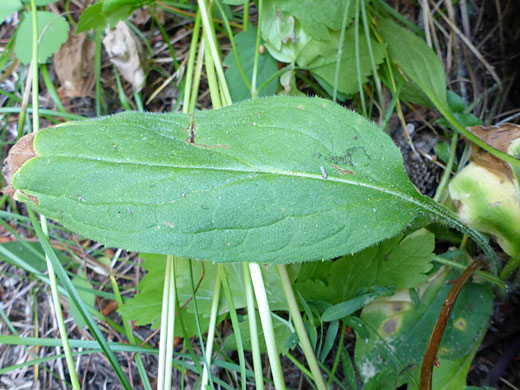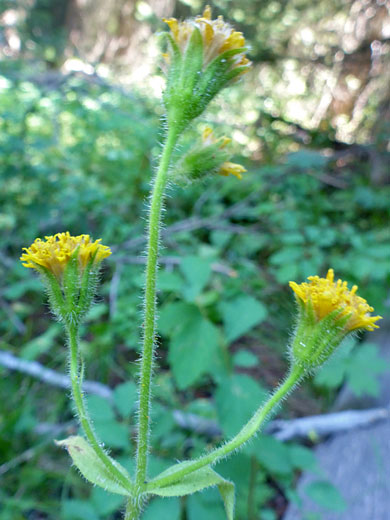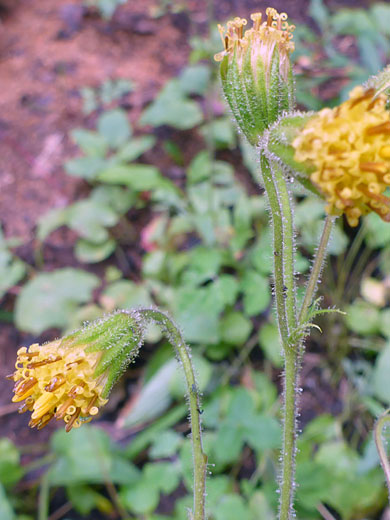
Hairy green phyllaries and yellow florets - arnica parryi, Two Ocean Lake Trail, Grand Teton National Park, Wyoming
Common names:
Parry's arnica, nodding arnica
Family:
Scientific name:
Arnica parryi
Main flower color:
Range:
The central Rocky Mountains, and states to the west
Height:
Up to 2 feet
Habitat:
Meadows, foothills, pine woodland; 2,000 to 12,000 feet
Leaves:
Opposite, ovate to oblong, or nearly round; up to 8 inches long and 2.4 inches across
Season:
May to September
Arnica parryi is one of the few species of this large genus for which the flowerheads are formed only of disc florets; between 20 and 50 of them, with yellow corollas and yellow anthers. They are surrounded by a ring of straw-colored pappus bristles, each lined by tiny barbs, while the involucre is enclosed by one row of between 8 and 20 equally-sized phyllaries, narrowly lanceolate or linear. Phyllaries are covered by soft, white, glandular hairs, as are the stems. Phyllary margins may be purplish. Stems typically branch a few times near the top, each branch terminating in one flowerhead.
Plants produce basal leaves and up to four pairs of stem leaves, at quite wide intervals. The basal leaves are usually withered by flowering. Leaves are attached by short stems. Leaf margins may be entire, or lined by a few small, widely-separated teeth. Leaves have a sparse covering of short hairs, most densely on the upper surfaces. Flowerheads are often nodding when in bud.
Plants produce basal leaves and up to four pairs of stem leaves, at quite wide intervals. The basal leaves are usually withered by flowering. Leaves are attached by short stems. Leaf margins may be entire, or lined by a few small, widely-separated teeth. Leaves have a sparse covering of short hairs, most densely on the upper surfaces. Flowerheads are often nodding when in bud.
All Contents © Copyright The American Southwest | Comments and Questions | Contribute | Site Map




